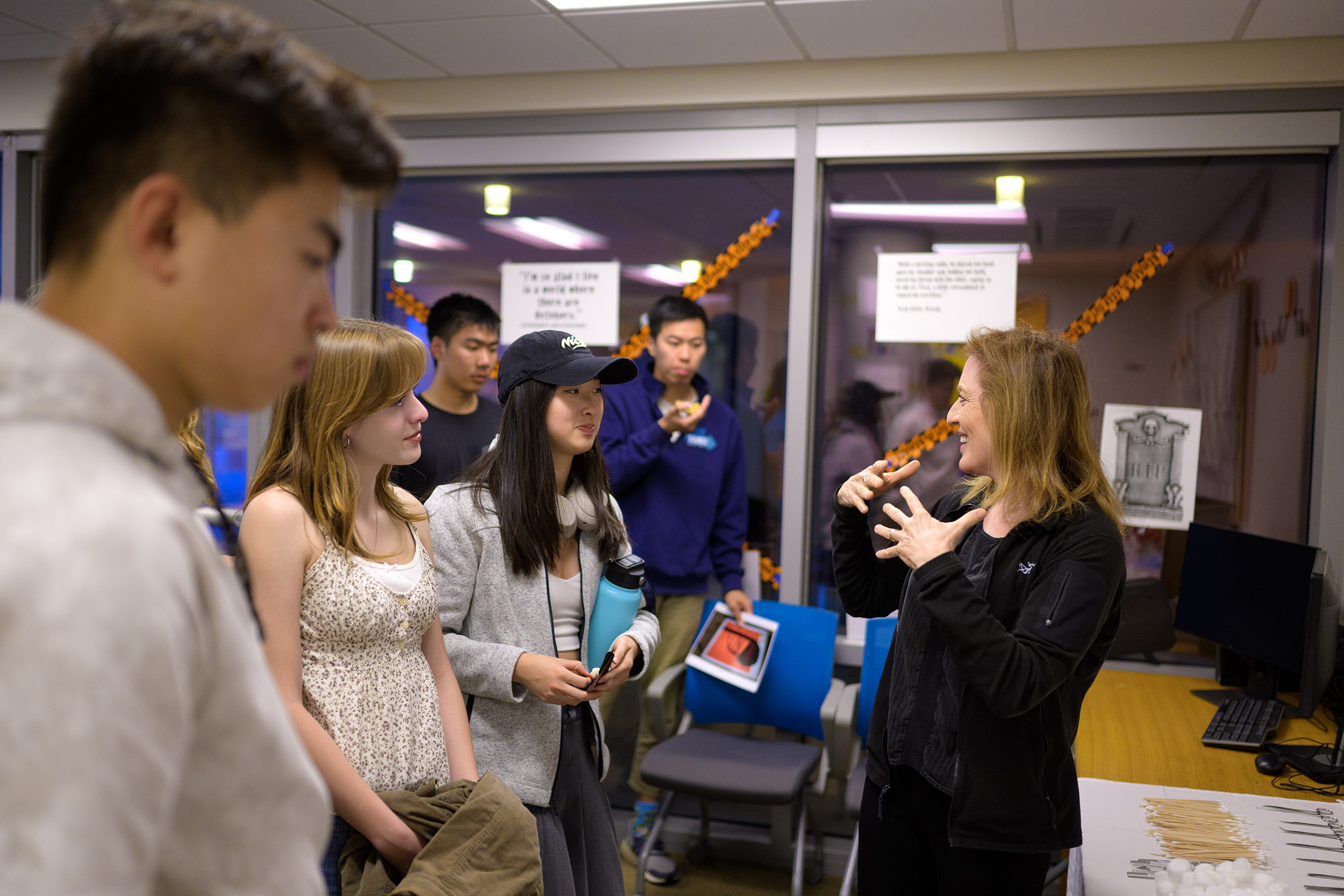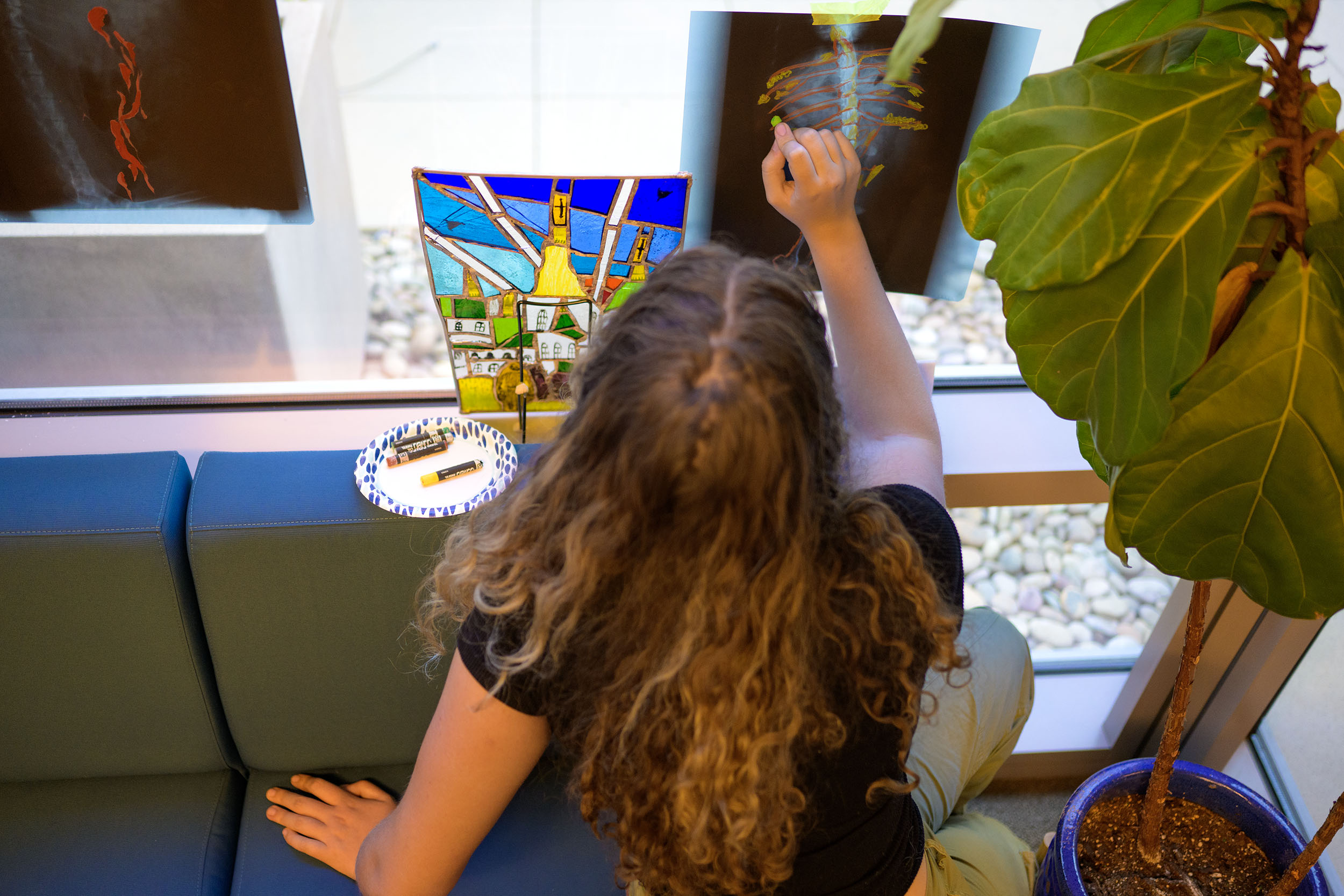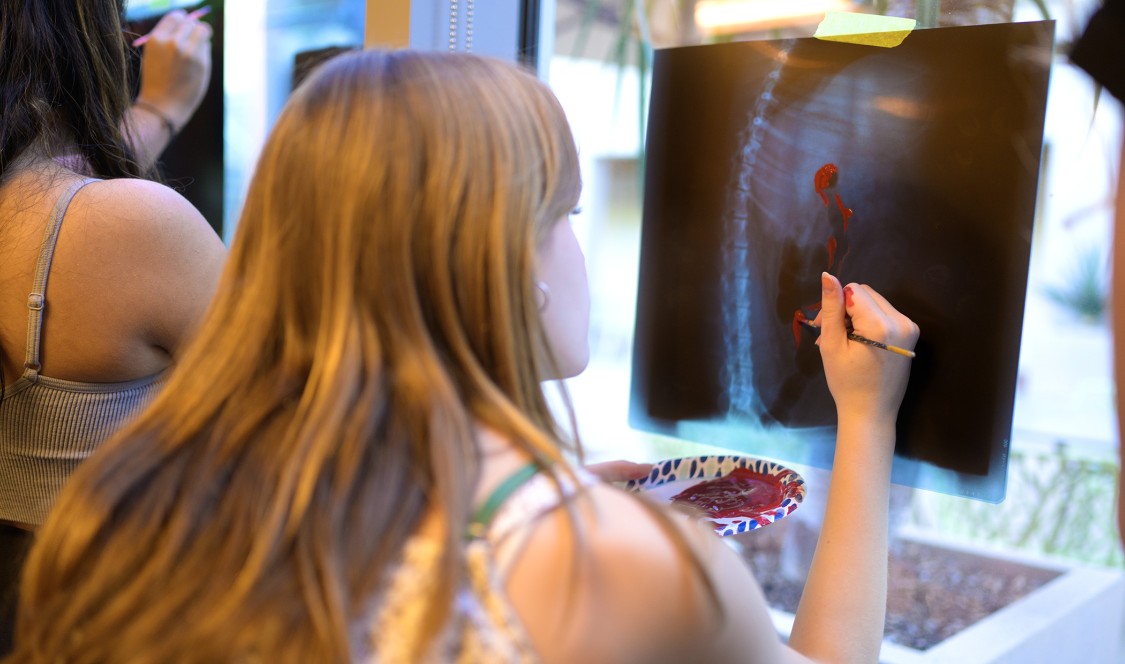For doctors, diagnostic images such as X-rays and MRIs provide medical insights into what’s happening inside our bodies. For artist Linda Alterwitz, they form a starting point for ethereal works of art that provide insights into the human condition.
With the goal “to provide opportunities for people to see the world differently and explore the boundaries of visibility,” Alterwitz titled her Nov. 1 Athenaeum talk, “At the Intersection of Art and Science,” which was co-sponsored by CMC’s Gould Center for Humanistic Studies and the Kravis Department of Integrated Sciences.

Earlier in the day, the multidisciplinary artist, who believes that “art brings people together,” guided Gould Fellows through an art-making workshop, and engaged in a lunchtime dialogue with both Gould and KDIS students.
“One of my goals at the Gould Center is to break down some of the silos between the humanities and other disciplines,” said Professor Amy Kind, director of the Gould Center. “When I saw an exhibit of Linda’s work, she struck me as being perfect for this purpose. By showing how we can visualize science through art, Linda’s work promotes the value of finding new ways to conceptualize the world around us. I wanted students to see the power of creativity in action.”
For the Gould workshop, Alterwitz brought canine X-rays for Gould Fellows to transform into their own works of art. Under her gentle guidance, the fellows were encouraged to bridge the left and right sides of their brains, shift their perspectives by turning their pictures “upside down to see what they look like,” and think about how they transformed the original image into something of their own.
Leo Yu ’26, a Gould Fellow who took part in the art-making activity, initially found creating art “intimidating,” but quickly began to enjoy the process. “I appreciated the opportunity to pause and make art,” he said. “This is why I’m a Humanities Fellow!”

Alterwitz’s Ath talk drew an audience of humanities and sciences students from across the 5Cs, as well as faculty and staff. Over the past 16 years, the Nevada-based Alterwitz has created art transposing diagnostic medical images, including patterns generated by EKGs, EEGs, and functional MRIs, onto landscape and other images, and creating “breathing portraits” captured by resting a camera on a person’s chest and pointing it up to the night sky for a 30-second exposure. An additional project, images created with a thermal camera for her series, Injection Site: Making the Vaccine Visible, were on display before her visit in CMC’s Collins Dining Hall.
She began her Ath talk by detailing how she was inspired to use an X-ray of her own brain after being cured of a brain tumor. Summoning the courage to look at the image, Alterwitz put the X-ray onto her lightbox, “and everything changed,” she said. “The painting that I used to do for decades didn’t have any importance anymore. What seemed important was science and my health. I wanted to find a way to use this diagnostic imagery in my work.”
Speaker Quotes
As the audience quietly absorbed her images, Alterwitz narrated a slideshow sharing the intent and process behind several bodies of work she’s completed over the past 16 years, which explore “the complex physiological and psychological issues surrounding the role of science and technology” in the realms of human health and the natural world.
For one series, Alterwitz described how she purchased a 16-sensor, medical-grade electroencephalogram (EEG) device, which measures the brain’s electrical activity. She asked 85 participants to complete a six-minute questionnaire on love and loss and recorded their brain waves. “For some, it was pretty intense,” she said. “I asked them each to write something about the experience and… about a place in the natural world that they considered their sanctuary.”
From there, she selected a piece of their brainwave, and printed it onto medical gauze. She then headed into nature with her camera and the gauze, “to find each person’s representation of sanctuary searching for invisible threads that bind us to Earth,” she said.
“I'm intrigued by the relationship between our internal human rhythms and the natural environment. Whether it’s our beating hearts, our breath patterns, or the electrical waves of our brain,” Alterwitz said.
Student Question
Jason, a first-year student planning to study Psychology and Philosophy, asked Alterwitz if ¬– since her work is at the intersection of art and science— she thinks of herself as “partially a scientist.”
“I think of myself as a logical person, and also a creative person,” she said. “I use both sides of my brain I think pretty well. Even as a kid, I was really good at math, but I was always really good at art. So, I think I'm kind of unique in that way that I balance the two. I balance both sides of my brain.”

